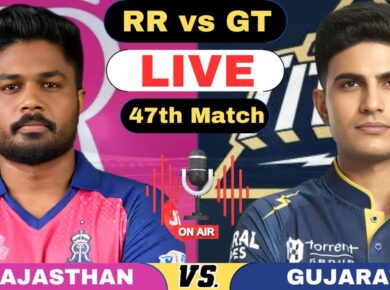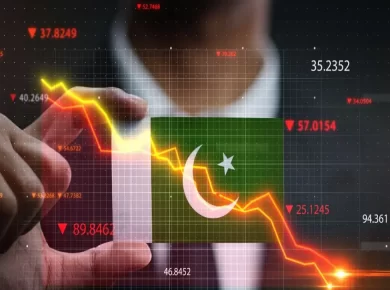Chemistry Syllabus UPSC Mains
Chemistry Syllabus Paper – I
Atomic Structure → Heisenberg’s uncertainty principle, Schrodinger wave equation (time independent); Interpretation of wave function, particle in one-dimensional box, quantum numbers, hydrogen atom wave functions; Shapes of s, p and d orbitals.
Chemical Bonding → Ionic bond, characteristics of ionic compounds, lattice energy, Born-Haber cycle; covalent bond and its general characteristics, polarities of bonds in molecules and their dipole moments; Valence bond theory, concept of resonance and resonance energy; Molecular orbital theory (LCAO method); bonding in H2+, H2, He2+ to Ne2, NO, CO, HF, and CN-; Comparison of valence bond and molecular orbital theories, bond order, bond strength and bond length.
Solid State → Crystal systems; Designation of crystal faces, lattice structures and unit cell; Bragg’s law; X-ray diffraction by crystals; Close packing, radius ratio rules, calculation of some limiting radius ratio values; Structures of NaCl, ZnS, CsCl and CaF2; Stoichiometric and nonstoichiometric defects, impurity defects, semi-conductors.
The Gaseous State and Transport Phenomenon → Equation of state for real gases, intermolecular interactions and critical phenomena and liquefaction of gases, Maxwell’s distribution of speeds, intermolecular collisions, collisions on the wall and effusion; Thermal conductivity and viscosity of ideal gases.
Liquid State → Kelvin equation; Surface tension and surface energy, wetting and contact angle, interfacial tension and capillary action.
Thermodynamics → Work, heat and internal energy; first law of thermodynamics. Second law of thermodynamics; entropy as a state function, entropy changes in various processes, entropy-reversibility and irreversibility, Free energy functions; Thermodynamic equation of state; Maxwell relations; Temperature, volume and pressure dependence of U, H, A, G, Cp and Cv α and β; J-T effect and inversion temperature; criteria for equilibrium, relation between equilibrium constant and thermodynamic quantities; Nerns theat theorem, introductory idea of third law of thermodynamics.
Phase Equilibria and Solutions → Clausius-Clapeyron equation; phase diagram for a pure substance; phase equilibria in binary systems, partially miscible liquids-upper and lower critical solution temperatures; partial molar quantities, their significance and determination; excess thermodynamic functions and their determination.
Electrochemistry → Debye-Huckel theory of strong electrolytes and Debye-Huckel limiting Law for various equilibrium and transport properties. Galvanic cells, concentration cells; electrochemical series, measurement of e.m.f. of cells and its applications fuel cells and batteries. Processes at electrodes; double layer at the interface; rate of charge transfer, current density; overpotential; electro-analytical techniques → Polarography, amperometry, ion selective electrodes and their uses.
Chemical Kinetics → Differential and integral rate equations for zeroth, first, second and fractional order reactions; Rate equations involving reverse, parallel, consecutive and chain reactions; branching chain and explosions; effect of temperature and pressure on rate constant; Study of fast reactions by stop-flow and relaxation methods; Collisions and transition state theories.
Photochemistry → Absorption of light; decay of excited state by different routes; photochemical reactions between hydrogen and halogens and their quantum yields.
Surface Phenomena and Catalysis → Absorption from gases and solutions on solid adsorbents, Langmuir and B.E.T. adsorption isotherms; determination of surface area, characteristics and mechanism of reaction on heterogeneous catalysts.
Bio-inorganic Chemistry → Metal ions in biological systems and their role in ion transport across the membranes (molecular mechanism), oxygenuptake proteins, cytochromes and ferredoxins.
Coordination Compounds
- Bonding theories of metal complexes; Valence bond theory, crystal field theory and its modifications; applications of theories in the explanation of magnetism and electronic spectra of metal complexes.
- Isomerism in coordination compounds; IUPAC nomenclature of coordination compounds; stereochemistry of complexes with 4 and 6 coordination numbers; chelate effect and polynuclear complexes; trans effect and its theories; kinetics of substitution reactions in square-planer complexes; thermodynamic and kinetic stability of complexes.
- EAN rule, Synthesis structure and reactivity of metal carbonyls; carboxylate anions, carbonyl hydrides and metal nitrosyl compounds.
- Complexes with aromatic systems, synthesis, structure and bonding in metal olefin complexes, alkyne complexes and cyclopentadienyl complexes; coordinative unsaturation, oxidative addition reactions, insertion reactions, fluxional molecules and their characterization; Compounds with metal-metal bonds and metal atom clusters.
Main Group Chemistry → Boranes, borazines, phosphazenes and cyclic phosphazene, silicates and silicones, Interhalogen compounds; Sulphur – nitrogen compounds, noble gas compounds.
General Chemistry of ‘f’ Block Elements → Lanthanides and actinides; separation, oxidation states, magnetic and spectral properties; lanthanide contraction.
Chemistry Syllabus Paper – II
Delocalised Covalent Bonding → Aromaticity, anti-aromaticity; annulenes, azulenes, tropolones, fulvenes, sydnones.
Reaction Mechanisms → General methods (both kinetic and non-kinetic) of study of mechanism of organic reactions → isotopic method, cross-over experiment, intermediate trapping, stereochemistry; energy of activation; thermodynamic control and kinetic control of reactions.
Reactive Intermediates → Generation, geometry, stability and reactions of carbonium ions and carbanions, free radicals, carbenes, benzynes and nitrenes.
Substitution Reactions → SN1, SN2 and SNi mechanisms; neighbouring group participation; electrophilic and nucleophilic reactions of aromatic compounds including heterocyclic compounds-pyrrole, furan, thiophene and indole.
Elimination Reactions → E1, E2 and E1cb mechanisms; orientation in E2 reactions-Saytzeff and Hoffmann; pyrolytic syn elimination – Chugaev and Cope eliminations.
Addition Reactions → Electrophilic addition to C=C and C=C; nucleophilic addition to C=0, C=N, conjugated olefins and carbonyls.
Reactions and Rearrangements
- Pinacol-pinacolone, Hoffmann, Beckmann, Baeyer-Villiger, Favorskii, Fries, Claisen, Cope, Stevens and Wagner Meerwein rearrangements
- Aldol condensation, Claisen condensation, Dieckmann, Perkin, Knoevenagel, Witting, Clemmensen, Wolff-Kishner, Cannizzaro and von Richter reactions; Stobbe, benzoin and acyloin condensations; Fischer indole synthesis, Skraup synthesis, Bischler-Napieralski, Sandmeyer, Reimer-Tiemann and Reformatsky reactions.
Pericyclic Reactions → Classification and examples; Woodward Hoffmann rules – electro cyclic reactions, cycloaddition reactions [2+2 and 4+2] and sigma tropic shifts [1, 3; 3, 3 and 1, 5] FMO approach.
Preparation and Properties of Polymers → Organic polymers-polyethylene, polystyrene, polyvinyl chloride, teflon, nylon, terylene, synthetic and natural rubber.
Biopolymers → Structure of proteins, DNA and RNA.
Synthetic Uses of Reagents → OsO4, HIO4, CrO3, Pb(OAc)4, SeO2, NBS, B2H6, Na-Liquid NH3, LiAlH4, NaBH4, n-BuLi and MCPBA.
Photochemistry → Photochemical reactions of simple organic compounds, excited and ground states, singlet and triplet states, Norrish-Type I and Type II reactions.
Spectroscopy → Principle and applications in structure elucidation
- Rotational → Diatomic molecules; isotopic substitution and rotational constants.
- Vibrational → Diatomic molecules, linear triatomic molecules, specific frequencies of functional groups in polyatomic molecules.
- Electronic → Singlet and triplet states; N→π* and ππ*→ transitions; application to conjugated double bonds and conjugated carbonyls-Woodward-Fieser rules; Charge transfer spectra.
- Nuclear Magnetic Resonance (1H NMR) → Basic principle; chemical shift and spin-spin interaction and coupling constants.
- Mass Spectrometry → Parent peak, base peak, metastable peak, McLafferty rearrangement.



